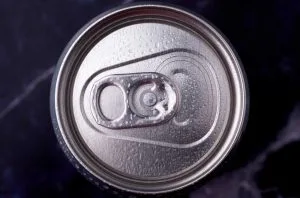After conducting extensive tests, the team determined that the molecular form of sulphur dioxide (SO2) is the culprit.
Winemakers regularly use it as an antioxidant and antimicrobial, and it does not cause any issues when wine is stored in glass bottles.
However, SO2 interacts with the aluminium cans in different ways, and it can lead to the dreaded rotten egg smell.
Producers tend to use an ultra-thin coating inside the can to keep the wine and the aluminium apart, but it is often not enough to stop the interaction.
It does not occur immediately, but the longer the can sits on the shelf, the more likely the bad smell is to arise.
Professor of food Gavin Sacks, who led the research along with Julie Goddard, said: ‘Of all the things we measured, most had no correlation. The one that stood out was molecular SO2.
‘With that, wineries typically aim for about 0.5 to one parts per million (ppm). We were noticing that in wines with more than 0.5 ppm molecular SO2, we had sizeable increases in hydrogen sulphide, the rotten egg smell, within four to eight months.’
The researchers found that maintaining 0.4 ppm of SO2 in wine and using epoxy liners could allow cans to have a shelf life of up to eight months, without the foul odour arising.
‘We’re suggesting that wineries aim on the lower end of what they’re usually comfortable with,’ said Sacks. ‘Yes, there’s going to be the chance of having more issues of oxidation.





